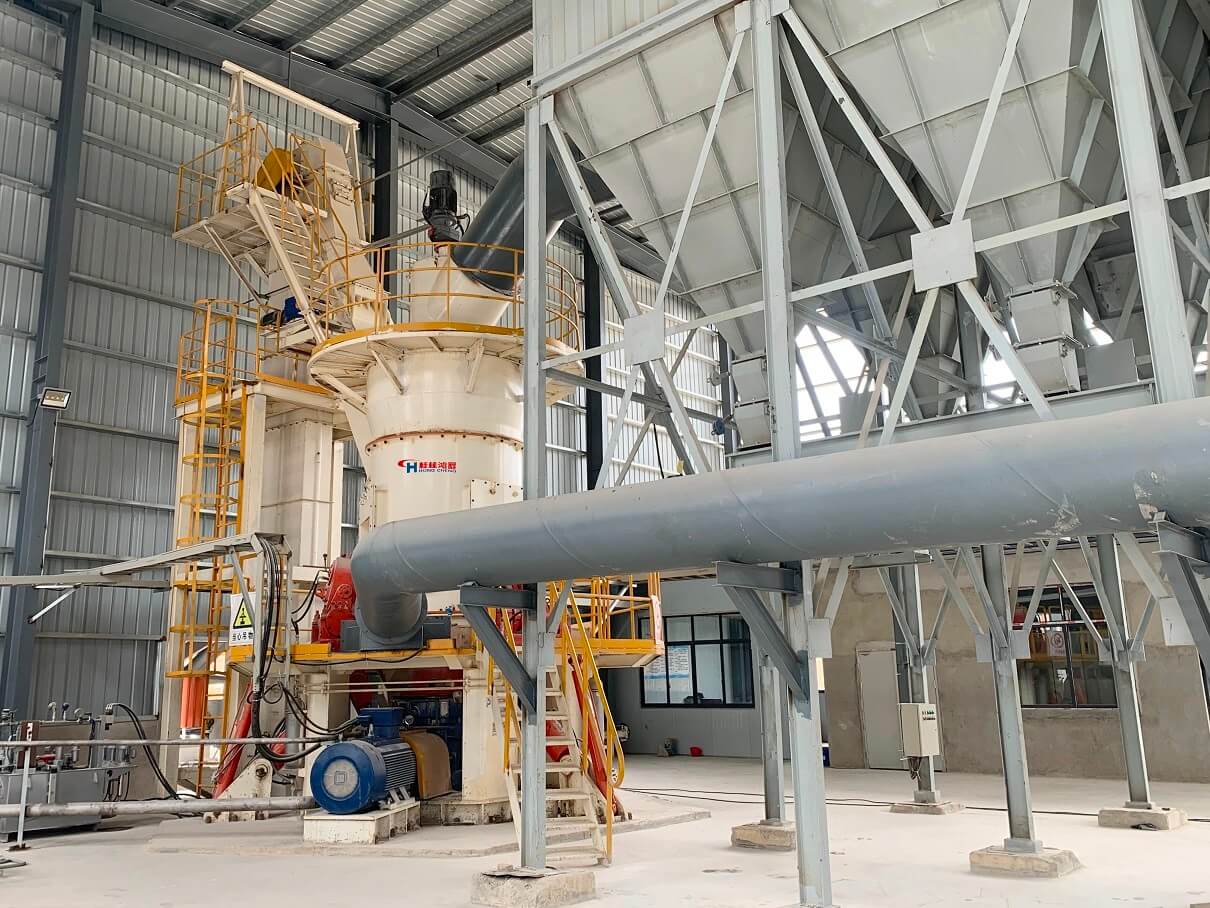Carbide slag is the waste residue produced after the hydrolysis of calcium carbide (CaC2) during the industrial production of acetylene gas, polyvinyl chloride, polyvinyl alcohol and other products. If calcium carbide slag is not comprehensively utilized, it will occupy a large amount of land and pollute the water resources near the storage site. If it is piled for a long time, it will easily dry out and fly off the ash, which will greatly pollute the surrounding environment. Therefore, it is an industrial waste that is difficult to handle. What are the comprehensive utilization of carbide slag?

Carbide slag vertical grinding mill, welcome to leave a message or consult [email protected]
The calcium carbide slag mill, calcium hydroxide digester and other equipment produced by Guilin Hongcheng have been widely used in the comprehensive utilization of calcium carbide slag. Today we will introduce to you the following main comprehensive utilization methods of calcium carbide slag:
1. Use carbide slag as desulfurizer: Sulfur dioxide is the main air pollutant emitted by coal-fired power plants and is the culprit of acid rain. China's numerous coal-fired power plants need to desulfurize their emissions. Zhejiang Juhua Group has succeeded in trying to use carbide slag as a desulfurizer instead of lime. Judging from the trial operation, it is feasible to use carbide slag instead of lime. The desulfurization efficiency can reach up to 98%. More than 4,000 tons of carbide slag can be digested every year, reducing costs by more than 10 million yuan. This technology is currently reported as a relatively new technology for utilizing carbide slag, but its processing capacity is too small to consume a company’s carbide slag emissions. For discharging companies, excess emissions must be found elsewhere.
2. Use carbide slag to produce novel coatings: At present, relevant domestic scientific researchers have developed the use of carbide slag as a raw material for the production of coatings. According to reports, this novel interior wall paint has the characteristics of strong adhesion, smooth coating like porcelain, and low production cost. This technology also uses a small amount of carbide slag, has strict requirements on various indicators of carbide slag, and has too many limitations.
3. Use calcium carbide slag to produce wall materials: Data show that in order to make full use of resources and implement sustainable development strategies, in accordance with the national encouragement policy for the comprehensive utilization of bulk industrial wastes such as calcium carbide slag and coal slag, domestic companies have researched and developed equipment to use calcium carbide slag. The slag produces various specifications of building materials, such as wall tiles, floor tiles, hollow bricks, etc. Due to the low added value of this technology product and unclear market prospects, its consumption of carbide slag is limited in actual operation.
4. Use carbide slag to produce cement: The above utilization of carbide slag has limitations. Some use a small amount of carbide slag, which is not enough to consume the amount of carbide slag discharged by a company; some products have low added value. , the market prospect is unclear. Therefore, it is currently used as a raw material to produce cement and has become the main way to comprehensively utilize carbide slag.
According to the above treatment of calcium carbide slag, it can be seen that the production of cement as raw material has become the main way to comprehensively utilize calcium carbide slag. The existing production process has certain defects. It is necessary to research and develop an advanced production process with advanced technology, reliable equipment, high output and low energy consumption to replace the existing production process to improve the company's technical equipment level and Economic benefits. In other words, the "dry grinding and dry burning" technology is used to produce cement clinker from carbide slag. In order to realize this idea, the following problems must be studied and solved: the mixture with calcium carbide slag has a high comprehensive moisture content, and equipment with strong drying and grinding capabilities must be used to process it. As a kind of drying and grinding equipment, the vertical mill has high heat exchange efficiency and is the first choice equipment. It has been measured that the gas temperature can drop from 350C to 90~100C 1m above the vertical mill air ring, and the gas solid heat Exchange was quick. In order to meet the requirements of grinding and drying high-viscosity wet raw materials, even vertical mills need to improve certain components to ensure that the hot gas can transfer heat to the wet materials in time and avoid grinding.
In this regard, the HLM series vertical mill produced by Guilin Hongcheng, a calcium carbide slag vertical mill manufacturer, has rich R&D and design experience and calcium carbide slag customer cases. Using vertical mill "dry grinding and dry burning" technology to process carbide slag and calcine cement clinker is an ideal way to recycle carbide slag. It has advanced technology, low energy consumption, and the rationality of the process is in line with the current development trend of cement technology. If it replaces the existing production process, it can improve the technical equipment level and economic benefits of the enterprise. More importantly, this move can make more comprehensive use of carbide slag, turn waste into treasure, protect the environment, and benefit future generations, which has huge social benefits. If you have related carbide slag treatment needs, please leave us a message to learn more about the equipment details.